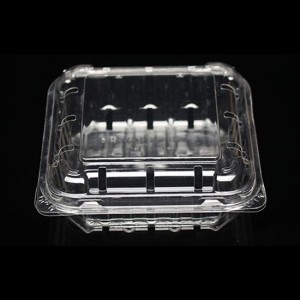When deciding on a type of packaging to use for your product, you’ll have several options at your disposal. Glass can be an appealing choice for many businesses, but it’s not always ideal. We’ll take a closer look at five of the reasons to choose plastic packaging instead of glass alternatives.
It’s lightweight
Without a doubt, glass is always going to be heavier than plastic. In fact, one study found that glass, steel, aluminum, and other plastic substitutes are 4.5 times heavier on average. Heavier packaging can impact everything from your production to transportation costs and timelines. There’s even a connection between plastic’s weight and its environmental impact. Because it’s lighter, its production consumes less energy and emits fewer greenhouse gases than with other materials. And ultimately, consumers don’t want to lug around an overly heavy product when there’s a way to bring it home without a physical struggle.
It’s durable
With glass packaging, you’ll definitely need to handle with care. That can be a huge drawback when it comes to transporting a product and ensuring customer satisfaction. If a glass container is dropped or crushed during shipping or stocking (which is fairly likely, since this material is already more slippery than other packaging options), your product will undoubtedly be compromised. Plastic, on the other hand, has a high level of durability and strength. If you need to safeguard a product, plastic packaging is undoubtedly the way to go. From food to fragile electronics, you can be assured your items won’t be exposed to the elements or damaged.
It’s safer
Because plastic is more durable than glass, that also means it’s much safer for both businesses and consumers to use. When glass breaks, it becomes a safety hazard to all who come in contact with it. Ultimately, using a glass container for a product might not be worth the health risk it poses to factory workers, retail employees, transportation operatives, and consumers who purchase your product. Your packaging should be a perk, not a deterrent.
It’s versatile
Glass can provide an interesting look, and there are glass containers available in lots of different shapes and sizes. But the truth is that it’s really no match for plastic when it comes to versatility. You can’t really mold glass into a pouch, sleeve, or bag. And you certainly can’t form it into a reusable clamshell shape that opens and closes in a secure way. It’s a lot easier to find a type of plastic packaging that will showcase your product perfectly and will please your customers. And since only 14% of consumers feel brands make an effort to improve packaging to satisfy their needs, plastic’s versatility can be a huge selling point.
It’s green
While glass can be reused over and over, making it an environmentally friendly option, it’s not the only kind of green packaging out there. In fact, plastics can be even more eco-friendly, in some cases. Not only are plastic packaging options (like clamshells) reusable and recyclable, but they’re often made in a more environmentally responsible way. Using plastics instead of other packaging types can save 75.8 million metric tons of CO2 — the equivalent of taking 16 million cars off the road for a whole year. And while over 40% of plastics can be recycled, only 20% of glass containers can be. By using plastic packaging and encouraging consumers to reuse and recycle, you’re doing your part to protect the planet.
